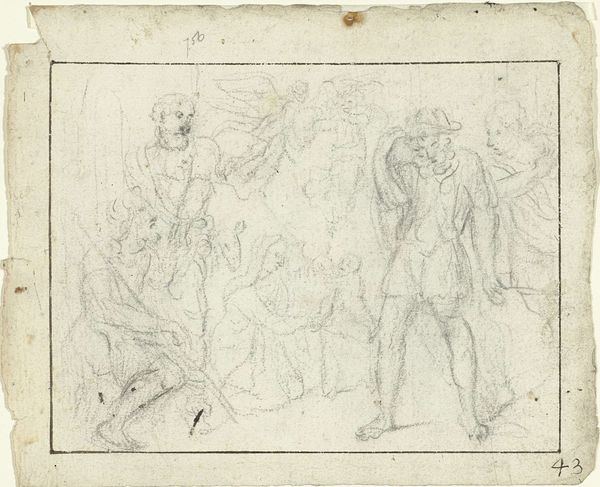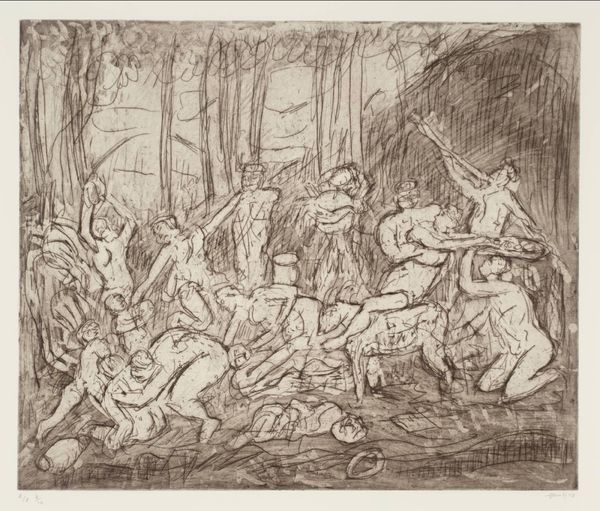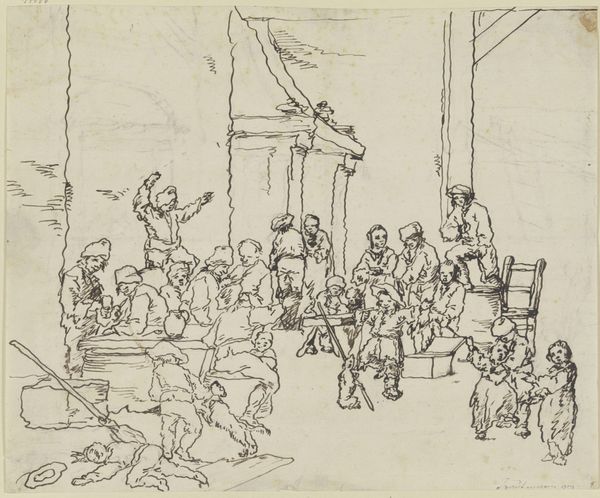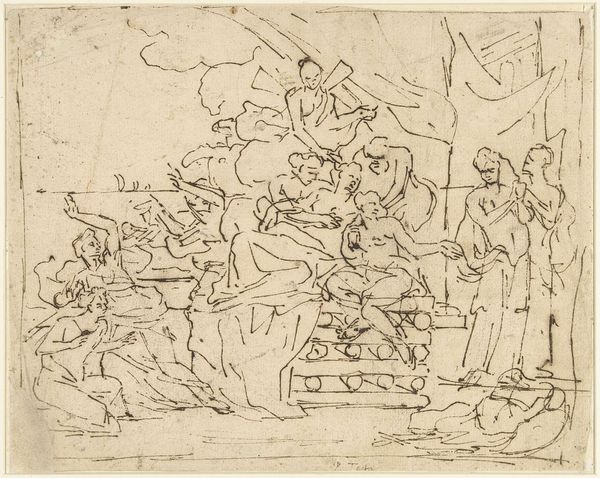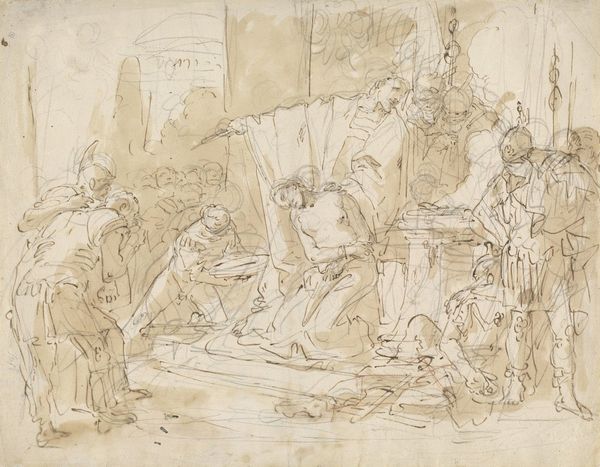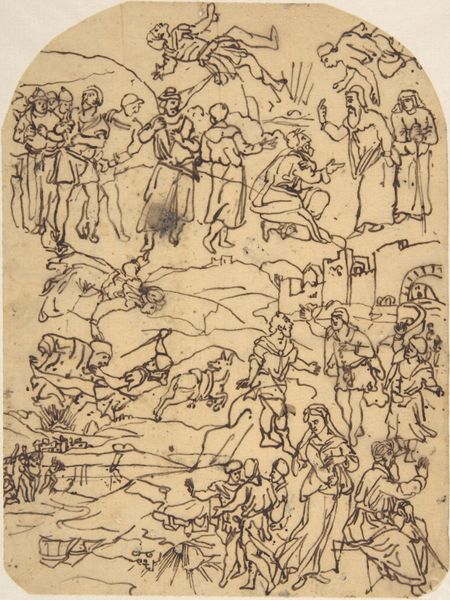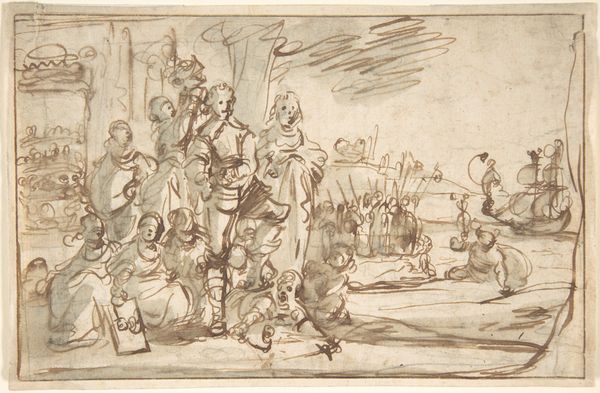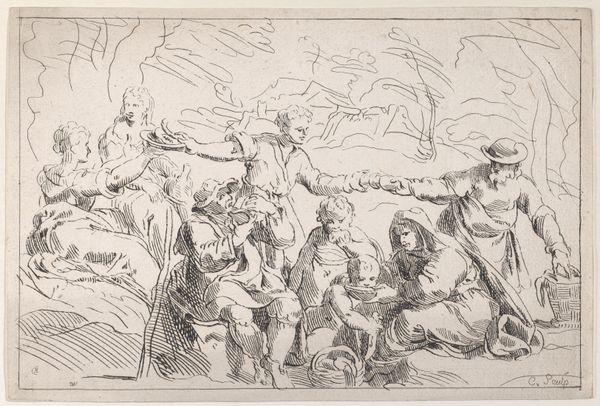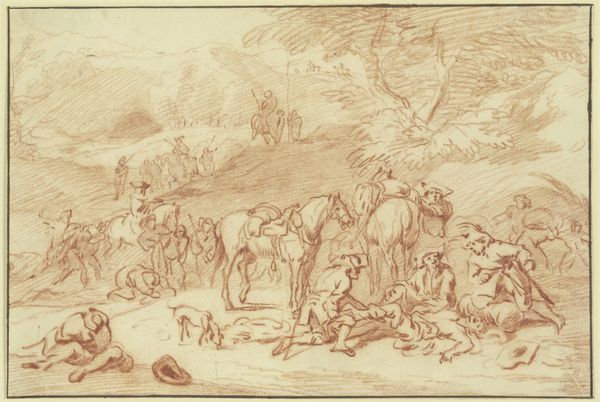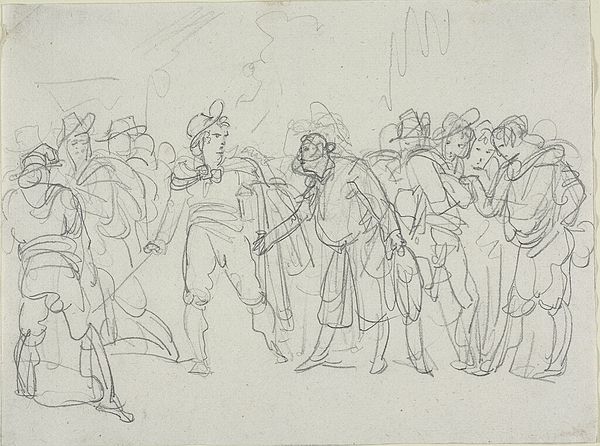
Portret van K. Klinkenberg, schilderend in een landschap omringd door figuren 1872
0:00
0:00
louisapol
Rijksmuseum
drawing, pencil
#
portrait
#
drawing
#
landscape
#
figuration
#
pencil
Dimensions: height 105 mm, width 160 mm
Copyright: Rijks Museum: Open Domain
Curator: I find this pencil drawing by Louis Apol fascinating; it's called "Portret van K. Klinkenberg, schilderend in een landschap omringd door figuren," made in 1872. Klinkenberg's position as an artist within a social environment speaks volumes about artistic labor and the culture of artistic appreciation at that time. Editor: My first impression is one of curious energy, almost a snapshot of a fleeting moment. The sketching technique and informal gathering gives an interesting peek into the labor, performance, and audience for art creation. I immediately see it from the standpoint of artistic practice. Curator: Exactly. And there's more to this performance than just showing work in progress, particularly looking through the lens of performativity. How does being surrounded by a particular community affect an artist's portrayal? Whose gaze directs the final product, and why? I see class dynamics interwoven into the artistic moment here. Editor: I'm drawn to the physical context of that moment. It raises interesting questions. Where exactly were these sketches crafted? Were materials supplied locally? And who are these surrounding figures and what is the socio-economic relationship to the painter? Curator: Those inquiries enrich our understanding of 19th-century societal values in ways beyond just art history; considering these perspectives complicates simplistic notions about art. Were some invited or paid to be spectators, acting as part of Klinkenberg’s artist statement in this rural social fabric? The location, too, impacts themes surrounding ideas like Romanticism's appeal, or escapism into simple pleasures! Editor: You make an important distinction, given that the availability of the sketch pencil reflects manufacturing innovation of materials meeting societal taste; how it democratizes access or enables art that can travel. Curator: We should further contextualize that even in a democratized era, these tools, locations, performances—these visual motifs are influenced still heavily by class dynamics influencing audience gaze which directs art’s performance into a certain expression. Editor: It prompts contemplation about these tensions in contemporary craft, consumption, and production. These nuances can reshape interpretations. Curator: This artwork exemplifies why both intersectional readings, considering social and philosophical influences, AND material investigations regarding context around making culture are required. We see art then in total dimensionality with these different approaches. Editor: I've now come to appreciate that these rough, informal techniques and subject-specific insights enrich both our grasp of context surrounding labor in culture at specific art performances such as the artistic community and means behind Klinkenberg’s sketched practice of work, too.
Comments
No comments
Be the first to comment and join the conversation on the ultimate creative platform.

